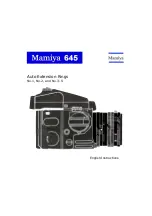
3
4
About Your Helmet
A helmet can provide important protection if fitted and worn correctly.
Important safety information:
A helmet must be correctly worn and maintained to provide
protection. Carefully read and follow these instructions. Incorrect use
or maintenance of your helmet could lead to serious injury or death.
Ride safely.
No helmet can protect the wearer against all possible impacts.
A severe impact, sharp object, improper use, or incorrect adjustment could
cause conditions beyond the protection of the helmet.
Check the adjustment before every ride.
To be effective, a helmet must
fit and be worn correctly. The helmet is designed to be retained by a strap
under the lower jaw. To check for correct fit, place helmet on head and
make any adjustments indicated. Securely fasten retention system. Grasp
the helmet and try to rotate it to the front and rear. A correctly fitted helmet
should be comfortable and should not move forward to obscure vision or
rearward to expose the forehead. If you cannot correctly adjust your helmet,
consult your dealer.
Avoid high heat.
Do not expose your helmet to heat, such as inside a car
on a sunny day. Excessive heat can damage the liner or shell, or make them
separate.
Avoid chemicals.
The helmet may be damaged and rendered ineffective
by petroleum and petroleum products, cleaning agents, paints, adhesives
and the like, without the damage being visible to the user. Also, some insect
repellants can damage the helmet.
Replace an old helmet or helmet with damage.
The helmet is designed
to absorb shock by partial destruction of the shell and liner. This damage
may not be visible. Therefore, if subjected to a severe blow, the helmet
should be destroyed and replaced even if it appears undamaged. The helmet
has a limited lifespan in use and should be replaced when it shows obvious
signs of wear. Helmet parts lose strength over time, so even if the helmet has
not been impacted or damaged, replace it after three years.
WARNING
Read this manual before riding with your new helmet!
Correct adjustment and use of this helmet is critical to safety. Parents should
explain the information in this manual to their children or anyone who is not able
to understand.
If you do not understand information in this manual, consult your dealer. If you
have a question or problem that your dealer cannot handle, contact us at our
address, telephone, or web site:
Bontrager
Attn: Customer Service
801 W. Madison Street
Waterloo, WI 53594
920.478.4678
www.bontrager.com
Illustrations may not exactly match your helmet. Not all Bontrager helmets
include all the listed features.
This manual meets the requirements for the following standards:
• U.S. Consumer Product Safety Commission 16 CFR Part 1203
• ASTM F 1447-06
• EN 1078
• AS/NZS 2063:2008
Tested by CRITT Sport Loisirs-86100 Châtellerault-France n°0501.


























